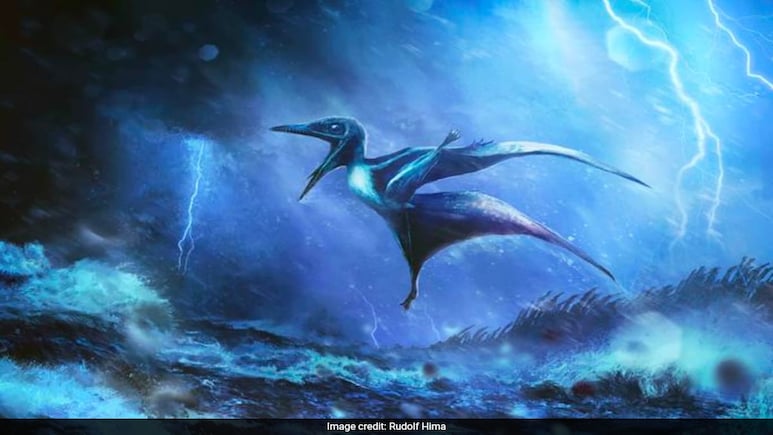
A new study, published in the journal Current Biology, has provided fresh details about the lives of pterosaurs, which are ancient flying reptiles that existed during the Mesozoic era. The researchers conducted a post-mortem analysis on the fossilised remains of two baby pterosaurs, which died 150 million years ago.
According to the researchers at the University of Leicester, the findings of the analysis revealed that baby pterosaur fossils, nicknamed Lucky and Lucky II, might have died in a violent storm, with fossils showing evidence of broken wings, which suggests that the young pterosaurs were caught in powerful gusts of wind.
The fossils were found in the Solnhofen limestones in southern Germany. The location provided ideal conditions for preserving the delicate remains of these ancient creatures.
Also Read | Researchers Develop Modified Glue Gun That Can Repair Complex Bone Fractures
The study suggests that larger, stronger pterosaurs may have been able to weather storms. Meanwhile, the younger ones were vulnerable to being swept into lagoons and preserved as fossils.
Rab Smyth, the lead author of the study, who is from the University of Leicester's Centre for Palaeobiology and Biosphere Evolution, was funded by the Natural Environment Research Council through the CENTA Doctoral Training Partnership.
"Pterosaurs had incredibly lightweight skeletons. Hollow, thin-walled bones are ideal for flight but terrible for fossilisation. The odds of preserving one are already slim and finding a fossil that tells you how the animal died is even rarer," Smyth said in a release.
Also Read | 23-Year-Old British Student Gets Life Sentence In Dubai For A "Stupid Mistake"
According to the statement, both skeletons showed the same unusual injury as they had a clean, slanted fracture to the humerus.
Lucky's left wing and Lucky II's right wing were both broken. It appeared that a powerful twisting force was responsible, such as the result of powerful gusts of wind.
The findings imply that the fossil record of pterosaurs may be biased towards younger, smaller individuals that were more likely to be preserved in storm deposits.
Track Latest News Live on NDTV.com and get news updates from India and around the world

